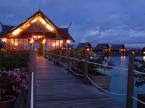The origin of the term Italia, from Latin : Italia, is uncertain. According to one of the more common explanations, the term was borrowed through Greek from the Oscan Víteliú, meaning "land of young cattle" (cf. Lat vitulus "calf", Umb vitlo "calf"). The bull was a symbol of the southern Italian tribes and was often depicted goring the Roman wolf as a defiant symbol of free Italy during the Samnite Wars.
Milan is divided into 9 distinct zones that radiate out from the Historical Center (Zona 1) to the periphery. They are identified numerically by the local council, but also have names, and each zone includes many different neighborhoods and quarters. Although every area is not listed here, each plays its own special role in the history of Milan; from the importantissimo historical center to the modern "dormitory quarters" of San Siro.
















